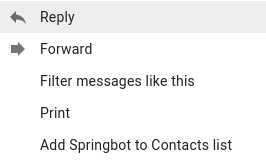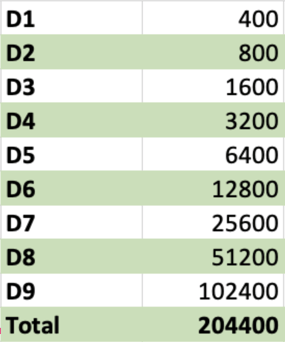Marketers want clearer visibility among increasing competition, but do we ever ask what our recipients, customers, and therefore Gmail and email service providers (ESPs) want? After passing send guidelines, infrastructure and authentication protocols, Gmail’s machine-learning algorithms pick up heavily on how recipients engage and interact with your emails, then assigns inbox placement accordingly. Many of these engagement signals are shared (opens, clicks, etc.) but most of them are hidden (think moving emails to different tabs, forwarding, starring, adding sender to contacts, marking important and more).
Below, we list our top recommendations to help land your emails in Gmail’s primary tab and inboxes across different ESPs with consistency, and keep them out of the Gmail spam folder. But before we dive in, we wanted to include a glossary of sorts to help you better understand what we’re talking about:
Spam Filters: software ESPs leverage to keep unwanted and harmful emails out of users’ inboxes.
Inbox Placement: where ESPs send an email in a user’s account. Aside from the Gmail Spam Folder, there are tabs (for instance, Gmail has sections such as Primary and Social) that a message can be assigned to.
Avoiding the Gmail Spam Folder
- Send to highly targeted segments or increase personalization
In a 2019 survey conducted by Litmus, personalization and interactiveness ranked at the top for email design. This is great to keep in mind when creating messages. Typically, the inbox placement on more personalized, less transactional emails is the Primary Tab. Highly-personalized content and targeted messaging is more appealing and more personable, falling more in line with what kind of emails recipients expect to see in their Primary Inbox Tab.
For example, a well-designed email campaign to your top VIP customers looking for feedback in exchange for entrance into a free raffle would fit the bill.
- Increase positive email engagement signals (public and hidden)
How buzzworthy and engaging was your email aside from opens and clicks? How long do you think it was read (positive), how often was it forwarded (positive) and were users clicking through (positive) and / or revisiting it (positive)? Or were users deleting it right away (negative)? Personalization and a polished look-and-feel has been shown to increase email reading times and click-through rates by 39 percent – both factors that help with getting favorable inbox placement and avoiding spam filters.
If you’re looking for inspiration, check out our email design lookbook which also includes messaging and subject line suggestions.
- Ask recipients to add your email address to their contacts
It’s always a good strategy, especially when someone is newly opted in, to let subscribers know to add your email address (or addresses) to their contacts. This action strengthens engagement signals, not only helping you avoid spam filters but also improving your inbox placement with subscribers.
Adding someone to a contact list is a quick process that you can help users through:
- Open the email
- Click the “…” icon in the top right
- Select “Add ___ to Contacts List”
 Again, this should be something you instruct all new subscribers to do, but it doesn’t hurt to send a quick email to those already on your list (see the first entry in this section).
Again, this should be something you instruct all new subscribers to do, but it doesn’t hurt to send a quick email to those already on your list (see the first entry in this section).
- Remind recipients to check their spam folders
A periodic note to subscribers with messaging like “Don’t miss out on our best deals. Check your spam folder to make sure your valuable coupon codes aren’t being lost” can serve as that gentle reminder for customers to help send Gmail the right signals. Moving something out of spam to the inbox sends a strong signal.
Better Inbox Placement (Avoid Soft Bounces, Rate-Limiting and Spam Filters)
- Review Gmail’s Bulk-Sending Guidelines and Proper List Warming
Stay up-to-date on how to keep your emails out of the Gmail Spam Folder or rate-limited. Rate limiting can occur due to bulk-sending rules, content being caught by spam filters, cold email mistakes (not staggering sends or emailing individually) and other bulk-sending guidelines from primary ESPs such as Microsoft/Outlook, Yahoo and others.
When changing your sending cadences or ESP, it is crucial to start with a small send and ramp up sending volume daily until you safely contacted your entire list. Not following a proper email warming can cause ensuing headaches for weeks to months. This is especially critical with list sizes over 10,000 (depending on many factors such as sending history, domain, content, IP reputation, etc.).

Example email warming schedule for Gmail recipients
Keep your email list clean and frequently send to engaged subscribers
Sunsetting / removing inactive contacts every few months and keeping your list clean of invalid or dormant addresses influences how Gmail calculates your sender reputation. Furthermore, continued sending to inactive subscribers can impact delivery rates or inbox placement. If your email list has 80 percent unengaged subscribers (not opened / clicked in over six months) and sending with this ratio is too frequent, it can lead to rate-limiting or landing in Gmail’s spam folder.
- Increase / reduce your sending frequency (find what sending cadence your subscribers want)
Consistent sending cadence, at least once a month, ensures that Gmail, Microsoft, Yahoo and other ESPs feel safe enough allow an increase in normal sending volume from your domain during peak sending times like the holidays. Even if emails are appealing, compelling and directed at your target audience, sudden and massive sending volume raises flags for most email service providers, including Gmail. However, if you are messaging your subscribers regularly and following proper guidelines, you can avoid spam filters when you send larger-than-normal email campaigns during big retail holidays.
Conversely, sending too many emails consistently is a driving factor behind getting tagged with spam complaints, soft bounces and rate-limiting.
SMB retailers and marketers are always looking for the best ways to keep their emails appearing above the competitions’, but they often overlook the best practices that keep their messages landing in the inbox to begin with. Fortunately, following the advice above will help you avoid the Gmail spam folder, clear spam filters and get favorable inbox placement with your subscribers.
Looking for additional help with your email marketing? Check out our beginner’s guide to email marketing here.




